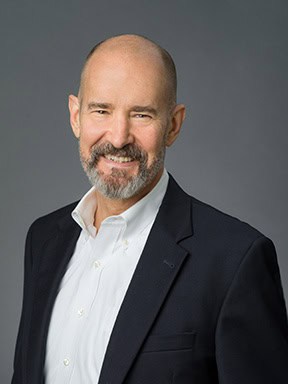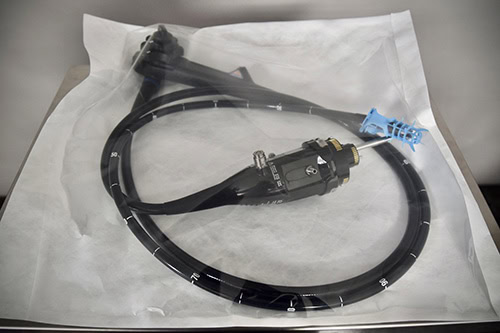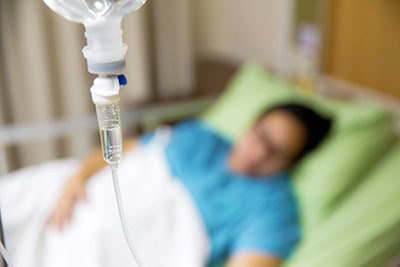Why Culture When You Can Terminally Sterilize?

Andersen Sterilizers
The American Journal of Infection Control published a study involving three major U.S. hospitals. The study explored the likelihood of endoscopy-related contamination after reprocessing. Nearly three out of four reusable medical endoscopes and duodenoscopes — deemed by the hospitals to have been reprocessed according to standard of care — tested positive for bacteria.
Despite reprocessing with high-level disinfection (HLD) per manufacturer’s instructions, researchers discovered that endoscopes used for colonoscopies, lung procedures, kidney stone removal and other procedures still harbored potentially deadly pathogens.
“It signals a lack of progress by manufacturers, hospitals and regulators in reducing contamination despite numerous reports of superbug outbreaks and patient deaths,” reported Chad Terhune in his 2018 New York Times article, Hospitals and device makers still struggle to rid medical scopes of infectious bacteria.
It is difficult to say if hospital-acquired infection rates from contaminated scopes have dropped since 2018, as available studies are limited and show inconsistent results. While some data suggest general declines in certain types of hospital-acquired infections (HAIs), these reports often don’t specifically focus on endoscopes.
In October 2024, after Vanderbilt Health notified several patients that they may have been exposed to HIV, hepatitis B and hepatitis C during endoscopy procedures, many began to wonder if the current standard of care for endoscope decontamination is adequate to ensure patient safety during endoscopic procedures.
However, as an added safety measure, many hospitals are now conducting microbiological surveillance of endoscopes as a safety measure for verifying the quality of reprocessing procedures and identifying contaminated devices. Yet, according to The Journal of Hospital Infection in its article, Microbiological Surveillance Post-Reprocessing of Flexible Endoscopes Used in Digestive Endoscopy: A National Study, duodenoscope-related outbreaks were still being reported.
In fact, the study showed that of 144 samples collected from 51 duodenoscopes, 36.81% were contaminated. The contamination rate was 27.5% in samples collected after reprocessing, 40% in samples collected during storage in a cabinet that was compliant, and 100% in samples collected during storage in a cabinet that was not compliant.

“The very fact that some scopes remained contaminated even after HLD suggests that there are still risks to our nation’s most vulnerable patients,” said A.E. “Ted” May, president of Andersen Sterilizers. “Our newly released EOGas 4PLUS sterilizer featuring award-winning EO-Flexible Chamber technology is the only system in the world proven to terminally sterilize the longest endoscopes, including those that have lumens longer than 1100mm and down to 1.2mm in diameter.”
Unlike traditional rigid chamber systems that employ up to 170 grams of ethylene oxide, Andersen’s breakthrough technology removes excess air from a flexible chamber. This allows the system to use 90% less EO — 17.6 grams or the equivalent of 2.5 tablespoons of liquid EO — per cycle. Paired with an abator, EOGas 4PLUS releases less than 0.02 grams of EO into the environment, making the systems effectively zero emissions and one of the most environmentally friendly systems on the market.
“After the CRE outbreaks of 2015, FDA dramatically increased the test requirements for sterilization claims that included duodenoscopes,” continued May, who also chairs and serves on multiple medical device standards committees, including AAMI and ISO working groups. “EOGas 4PLUS was the first to receive FDA 510(k) clearance for terminal sterilization of duodenoscopes and colonoscopes under this new, stricter set of test requirements. This means that scopes stored in their pouches remain sterile for up to six months after reprocessing. There is no need for culturing or microbiological surveillance of endoscopes after terminal sterilization, saving on costs, time and resources.”
The sense of increased patient safety by detecting contamination that survives the reprocessing procedure is outweighed by the costs, logistical complexity and limitations inherent to culture-based testing.
Culturing is expensive due to the costs of sterile sampling supplies, laboratory fees, and the need for additional trained staff to perform the sampling correctly. More endoscopes may be needed to maintain service during the quarantine period.
“A cultured endoscope must be quarantined until the results are available, which can take anywhere from 24 to 48 hours,” said May. “The procedure can disrupt workflow and limit the availability of endoscopes, which is especially challenging for hospital and surgical facilities with high procedure volumes. What’s more, no culture can detect all possible microorganisms. Some pathogens have differing growth requirements or may be in a viable but nonculturable state, which can lead to false-negative results.”
To learn more about EOGas 4PLUS and Andersen’s EO-Flexible Chamber Technology, visit Healthcare.
Ted May will be a featured speaker in the upcoming Sterilization Summit 2025 in Anaheim, California Oct. 20 through Oct. 21.
Expert Guidance for Your Needs
Tell us about your sterilization requirements — our experts are here to guide you to the perfect EO solution.
Expert Guidance for Your Needs
Tell us about your sterilization requirements — our experts are here to guide you to the perfect EO solution.

